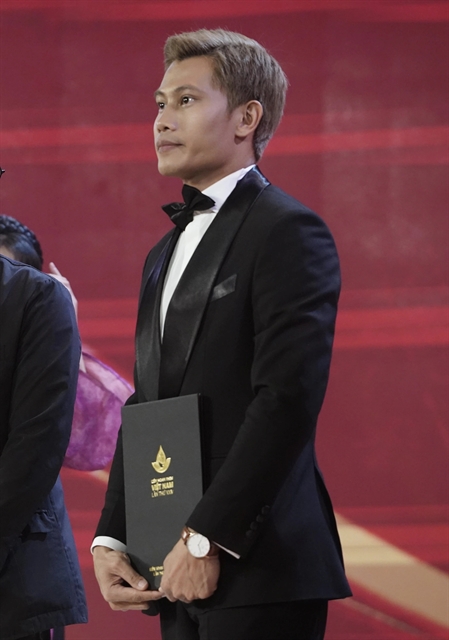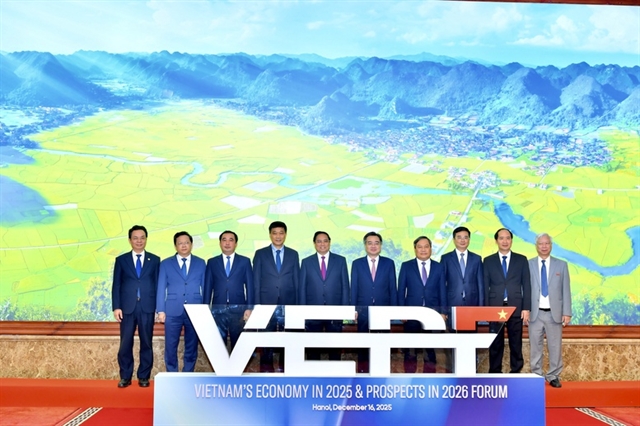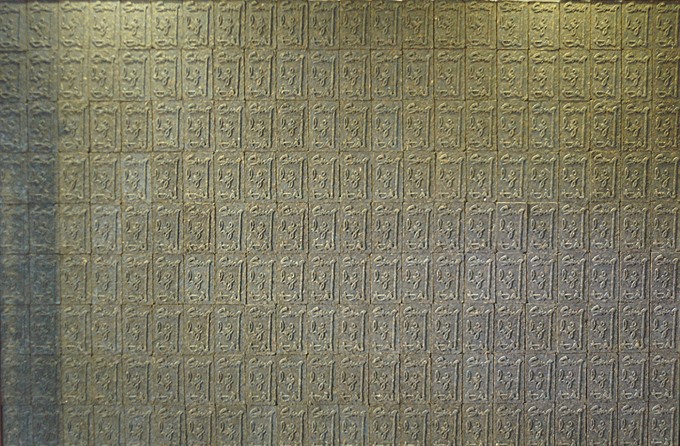 Inner Sanctum
Inner Sanctum

In the last 20 years, Nguyễn Ngọc Tuấn has travelled across Việt Nam looking for famous teas that have been lost in the past and tried his best to develop them. He shares with Vương Bạch Liên his passion for tea.
 |
| Tea hunter: Nguyễn Ngọc Tuấn |
In the last 20 years, Nguyễn Ngọc Tuấn has travelled across Việt Nam looking for famous teas that have been lost in the past and tried his best to develop them. He shares with Vương Bạch Liên his passion for tea.
Inner Sanctum: In May, you and your 7P company in HCM City impressed the public after your painting made up of more than 200 Pu’er tea cakes was declared the biggest artwork of its kind in Việt Nam. Why did you make this object?
Many Vietnamese people have good knowledge about tea. But few know about fermented Pu’er tea. In Vietnamese it is called "Trà Dược".
The leaves are fermented after being dried and then rolled into a cake. The longer they are kept, the more precious it becomes. The tea has many medicinal properties, but most pedople today know little about this.
That’s why we created this painting made from Pu’er tea cakes with the words "Song Hỷ Trà" written in calligraphy and inscribed on each block. The tea is made from Shan Tuyết tea leaves we found growing in organic tea-growing region in Cao Bồ Commune in the northern province of Hà Giang.
Inner Sanctum: Why the words Song Hỷ Trà?
It’s the name of the trademark of our tea products. Song Hỷ Trà (Dual Happiness Tea) first makes people think of tea for weddings.
We hope it is the tea of happiness. When you come to us, you can enjoy good tea and meet friends sharing passion for tea.
 |
| Bricks of taste: The painting being made up of more than 200 Pu’er tea bricks which was recognised as biggest painting of its kind in Việt Nam.— Photos Courtesy of Nguyễn Ngọc Tuấn |
Inner Sanctum: Why are you so interested in tea?
I was born and grew up in Hà Nội. And I became attached to tea in a natural way. At the beginning, it was a need in daily life. My family used to sell tea and other beverages, so I often drank tea when I was small.
I studied at a university in Thái Nguyên Province [a region famous for tea growing]. Every week, to get to the university, I took a night train from Hà Nội toYên Bái. During those trips in the train, I had opportunity to enjoy various kinds of teas. Tea became tone of my best memories of student life.
Later, when I moved to HCM City, I had an opportunity to get to know about new kinds of tea in the South, including Cầu Tre, B’Lao, Cầu Đất, and other varieties in the Central Highlands.
I discovered that the southern people drink tea even more often than people in the North, particularly iced tea. I was very surprised.
Like many other Vietnamese people, tea has become a part of my life.
Inner Sanctum: When did you begin to make business of tea?
The more I travel to tea-growing regions, the more I am interested in tea culture. Tea is very present in the life of Vietnamese people. We serve tea to guests coming to our house, at weddings, funerals, festivals - and as Buddhist offerings and gifts.
From North to South, there are famous tea growing regions with beautiful legends, but many have disappeared with the time. So I dreamed that one day I could find lots of lost teas and restore them. That’s why in 2003, I decided to devote time to the subject. So far, we have restored more than 20 famous teas of Việt Nam. They include Lũng Phìn, Lam, lotus tea of four seasons, Cánh Hạc, Hồng Hạc, Phổ Nhĩ Việt, and Oolong 68.
Inner Sanctum: Was it easy for you to start?
No, it was not easy. Only when I began did I understand all the difficulties. Tea is an agricultural product, so it depends on many agricultural conditions, climate, harvest as well as the treatment after harvest. And its quality also depends on the processes to ensure safety.
Products that are put into the market have to respect a certain quality, and its quality should not continuously change.
Moreover, the supporting industry in Việt Nam has not well-developed, making it difficult to create added value to teas. For example, in order to have beautiful packing, producers have to do it themselves.
That’s why tea in our country has not developed well. We have a lot of good growing regions, with high yields, but when tea is exported, it gets a very low price. That’s why many people do not attach much importance to Vietnamese tea, believing that it is only a cheap beverage.
Inner Sanctum: So were you discouraged?
Making business out of tea has been very difficult, but I could not give up. Vietnamese teas would not have been promoted to people in other countries if my colleagues and I had not been firm in pursuing our objective.
Inner Sanctum: In this modern life, tea has been replaced gradually by other beverages. Are you afraid that the tradition of drinking tea will be gradually lost among the young generation?
I have met many young people enjoying drinking tea. They have found the true value of a cup of tea.
However, besides tea, there are many other kinds of beverages. So to preserve the tradition of drinking tea, we need campaigns by concerned bodies to further encourage the ancient culture.
In 1991, I began to do small business in Quang Trung Street in downtown Hà Nội. And now, 25 years later, I am back in this street to open my tea shop. I hope that Song Hỷ Trà shop at 25 Quang Trung will become a popular tea house for all Vietnamese.— VNS


.jpg)

